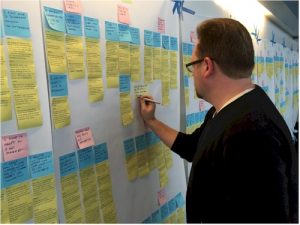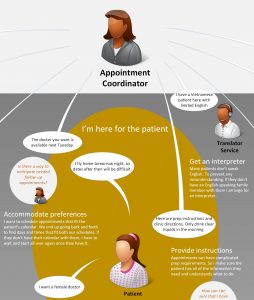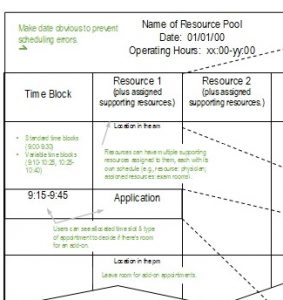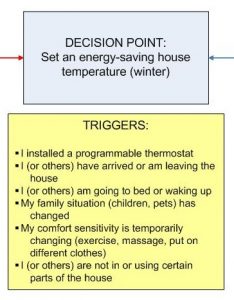| Contextual interview data are consolidated into models representing the scope and structure of target activity across your user population. Models reveal important aspects of user’ work and lives such as issues they face, tasks they perform, influence of self-identity, collaboration with others, and artifacts they use. Model details are used to inspire design thinking to invent or improve user experience. Here are some examples:
|
|
 |
Affinity Diagram: Scope of User Issues
The affinity diagram is a wall-size representation of the key issues captured in notes during interpretation sessions from contextual inquiry interviews. It reveals in a hierarchy the issues, pain points, unmet needs, and quality expectations across the user population. The affinity is a core artifact to support design thinking and invention for new products and features. Each element of the hierarchy is a label written in the voice of the user so that people “walking the wall” to generate ideas will read it like a detailed, real life story of users as told by users. |
|
|
|
 |
Collaboration Model
The Collaboration Model shows the underlying roles people adopt and their communication and coordination among each other to accomplish activities. It helps identify impediments to efficient collaboration and what information is important for participants to use and pass on to each other. |
|
|
|
 |
Identity Model
The Identity Model identifies what people tell themselves and others about who they are. Beyond goal-based personas, this model presents core elements of self-identity users associate with the target activities supported by a product or service. The Identity Model helps designers understand how to help users achieve the core drivers of their self-identity, how to support and not undermine self-esteem, how to support celebration and sharing of accomplishments, and what marketing messages will be appealing. |
|
|
|
 |
Sequence Model
The Sequence Model describes the task steps people follow to complete an activity, including the triggers, strategies, and intents behind those steps. It reveals opportunities to support user intent in new and more direct ways, eliminate or automate individual steps, and helps prevent accidentally neglecting important intents and strategies in the new system. |
|
|
|
 |
Artifact Model
The Artifact Model represents key artifacts people use and how they are used. It can represent the information that is communicated among people, its structure can suggest structure for system interaction, and it can reveal user information needs that might otherwise be missed. |
|
|
|
 |
Decision Model
The Decision Model shows positive and negative influences that affect a person’s decision-making, including the events that trigger decisions. It identifies opportunities to apply positive or negative reinforcement on peoples’ decisions, identifies specific influences that can be used to help people more clearly see what is driving their decisions, and shows where a design can tie into the events that lead up to a decision. |